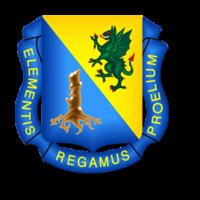Active 1918 – present Branch U.S. Army Garrison/HQ Fort Leonard Wood | Type TRADOC school | |
 | ||
Role Prepare Chemical Branch Soldiers and Officers to conduct CBRN Operations Motto Elementis regamus proelium (Let Us Rule the Battle by Means of the Elements or We rule the battle through the elements) | ||
The United States Army CBRN School, located at Fort Leonard Wood, Missouri, is the primary American training school specializing in military Chemical, Biological, Radiological, and Nuclear (CBRN) defense. Until 2008, it was known as the United States Army Chemical School.
Contents
Training Facilities
In accordance with U.S. Federal Law, Fort Leonard Wood, Missouri is designated the central location for all of the Department of Defense's CBRN Operations Training and home to the Chemical Corps Regiment. It was moved from Fort McClellan Alabama after the base was closed by the Defense Base Closure and Realignment Commission (BRAC) in 1999.
The Army CBRN School provides numerous courses for officers, Non-commissioned Officers and Initial Entry Soldiers, ranging from highly technical to the more general in nature. Numerous international officers also send students to train at the CBRN School. Additionally, the US Air Force, US Navy, US Coast Guard and US Marine Corps all also maintain training elements at Fort Leonard Wood who, in partnerships with the Army CBRN School, train their personnel in CBRN operations.
Fort Leonard Wood and the Army CBRN School also have facilities in which to conduct training, such as the Chemical Defense Training Facility (or CDTF) where military students from across the globe train and become familiar with actual nerve agents in realistic scenarios, and also conduct training with radiological isotopes and inert biological agents. The Edwin R. Bradley Radiological Teaching Laboratories is one of the very few radiological teaching laboratories licensed by the NRC in the Department of Defense. It provides a variety of training in radiological and nuclear defense under the supervision of credentialed scientists.
The newest facility at the CBRN School is the Lieutenant Joseph Terry CBRN Training Facility. Opened in November 2007, The 1LT Joseph Terry Chemical, Biological, Radiological, Nuclear (CBRN) Responder Training Facility occupies approximately 22.5 acres (91,000 m2) and provides a state-of-the-art CBRN Responder Training Campus for Inter-Service and other Agencies as requested. The US Army CBRN School is the lead for all DoD CBRN Response Training. This facility provides unmatched training opportunities in the fields of CBRN Consequence Management, Hazardous Materials Incident Response, Realistic training venues and other CBRN Response arenas as required. The CBRN School also provides training in Sensitive Site Assessment and Exploitation.
In addition to training, the CBRN School also develops doctrine for Operations, researches and develops materiel requirements, and conducts joint service experimentation as the Joint Combat Developer for the Department of Defense's Chemical and Biological Defense Program.
Official name change
On 11 January 2008, The U.S. Army Chemical School was renamed as The U.S. Army Chemical, Biological, Radiological and Nuclear School (USACBRNS). The name change was to encompass, in the title of the school, the wide range of training and expertise maintained by the U.S. Army Chemical Corps.
Command
The Commandant of the U.S. Army CBRN School is Brigadier General James E. Bonner. The Regimental Command Sergeant Major is CSM Henny Hodgkins. The Regimental Chief Warrant Officer, is CW2 Jesse Deberry.
